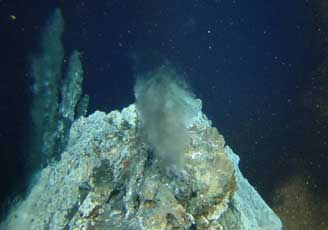While many flock to the beaches for vacation in August, researchers from France, Europe, and North America will turn their attention to the depths of the ocean to explore the geology and biology of
 |
|
Deep-Sea Laboratory |
hydrothermal species. Two ocean campaigns named Graviluck and MoMARETO, led by French institutes IFREMER, CNRS, and INSU, will launch in early August. The primary goal of these campaigns is to establish an underwater laboratory in the southern Azores archipelago.
The ocean ridges are volcanic mountain ranges where cold seawater meets hot springs rich in heavy metals or hydrogen sulfide. These locations form unique ecosystems previously unknown, hosting populations of bacteria, crustaceans, mollusks, and fish.
The MoMARETO campaign focuses on studying the biology of hydrothermal species, while the Graviluck campaign measures the vertical movements of the ocean floor. Researchers aim to target the Lucky Strike underwater volcano located on the ridge in the southern Azores archipelago. This will be the site for the deep-sea laboratory as part of the international MoMAR project.
Scientific instruments will be placed on or near the ocean floor to collect geological, biological, and chemical data. Following preparatory studies, the installation of the observation station will begin this year.
















































